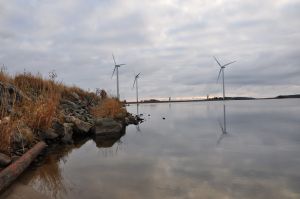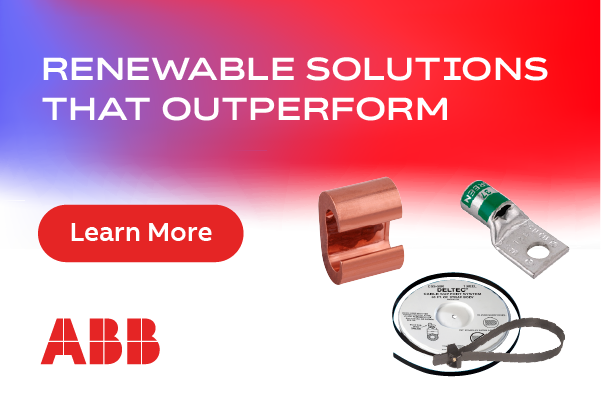Wind Power & Market Expansion: Warranting a course of action
 Over the last five years, the US onshore wind sector has been a relatively stable environment for investors, and is viewed as a growing industry that supports many state economies through employment and taxes. It’s on track to produce 20% of the US’s power capacity by 2030. The immediate future, however, is less certain. Competitive gas prices, transmission issues, the general economic slowdown, and a number of questions over national energy policy continue to cause independent power producers to scale back their plans.
Over the last five years, the US onshore wind sector has been a relatively stable environment for investors, and is viewed as a growing industry that supports many state economies through employment and taxes. It’s on track to produce 20% of the US’s power capacity by 2030. The immediate future, however, is less certain. Competitive gas prices, transmission issues, the general economic slowdown, and a number of questions over national energy policy continue to cause independent power producers to scale back their plans.
These issues, coupled with ageing equipment, have the potential to create a scenario that will worsen the prospects for investors, increase wind energy prices, and threaten new developments that, ultimately, could derail future market expansion. Now, that a significant amount of US wind energy equipment is reaching the stage where it’s no longer supported by manufacturers’ warranties, energy producers and wind farm owners must evaluate how they can manage and mitigate the large costs involved in servicing and re-commissioning equipment no longer supported by OEM warranties.
While the wider macro issues of price comparisons for alternative energy sources and national policy tend to require a governmental or market response, on the issue of maintaining the economic viability of wind energy equipment, the insurance sector has its part to play—and beyond that of providing traditional cover during the construction and operations phase. Through the creation of suitable policies, educated underwriting, and supporting services, insurers should be able to price the long-term risk involved in ageing equipment at a level the industry can absorb.
The biggest problem with wind energy equipment in the US market today may be attributed to traditional issues, such as blade and gearbox failures. Much of these costs are initially borne under the manufacturer’s initial two-year warranty. Once that expires, these losses are frequently covered by appropriately structured property damage insurance. This protection, however, frequently has a “serial loss clause,” limiting the number of losses to which the policy will respond when arising from the same cause.
Where ongoing operations and maintenance (O&M) and property damage is concerned, the costs are calculated on the basis of how well a turbine design is proven in operation, and then used to justify a recommendation for elements of the financing structure. Where turbines come from manufacturers with a strong track record in the industry, the risk profile of the project is reduced. Where the converse is true, or the equipment supplier is new to the market, the profile is naturally higher, leading to increased upfront costs. With failures that occur out-of-warranty, and in excess of the limitation of the serial loss clause, a major maintenance fund may be required—which, in turn, will be reflected in a large spare part budget or contingency reserve required by lenders. Increased contingency reserves reduce the project’s overall investment return, a critical financial measure for equity investors.
Although manufacturers typically provide warranties that cover equipment for the first two years of commercial operation, such warranties tend to come with covenants that place the burden of proof for failure with the owner or operator. This adds additional financial burden and a diminished return on investment.
For the insurance industry, there are two roles that may be adopted in working with wind project owners to address the end of the initial OEM warranty. First, is the development and support of industry wide “best practices” in the pre-loss prevention strategies of condition monitoring and predictive maintenance. Although these services are available from insurers in the conventional power generation business, little is offered to owner/operators in wind power generation. Post loss, there are also recovery and mitigation strategies that minimize loss costs from downtime through equipment, and services supply chain management.
The second role for insurers is to provide cost stabilization to operating expenses for project owners over the long term; thereby, providing lenders with a greater assurance that debt service requirements can be met over the duration of a loan. In this capacity, insurers would provide a “cost cap” form of protection to the annual expenses associated with equipment failures.
Using insurance in this role, project owners would retain some level of expected annual losses. Insurers would step in to respond in the event annual equipment losses—as measured in dollars, number of events, or some combination of the two—if they exceed the pre-agreed retained amount. If properly structured, this approach to using insurance can be cost effective and minimize frictional costs in the insurance transaction. And, by pricing this risk accordingly, insurers can ensure costs are spread out over a long period of time, rather than as a series of price shocks that would be more detrimental to the industry participants.
The terms of coverage would also be modified to some degree to address losses and events that may not, otherwise, be covered by a traditional property damage policy. Wind farm owners and operators should be covered for a range of scenarios: from unforeseen and unscheduled repairs associated with defective wind turbine parts, faulty workmanship and design, to the longer-term cost of removal and repair.
Some insurers are uniquely positioned to take this two-part approach for the simple reason they have accumulated years of loss experience. This experience provides insight to the loss frequency and loss severity associated with various pieces of equipment and the respective manufacturers. It also gives insurers insight into the causes of loss, and a better understanding of the measures to be taken to identify situations and scenarios prior to mechanical or electrical breakdown. Both aspects of this experience put knowledgeable insurers in the position to intelligently price risk transfer, and provide a long-term solution and continuity in their market participation.
The insurance industry can’t provide all the answers to sustaining the US wind energy sector, but it can provide a level of security that will help provide some guarantees against the charges that wind energy can’t match the long-term security of supply of the traditional energy sectors.
John McLane is the president of GCube Insurance Services Inc.
GCube Insurance Services, Inc.
www.gcube-insurance.com
Author: John McLane
Volume: September/October 2011








